Rice Pilaf with Caramelized Onion, Orange, Cherry & Pistachio
This post may contain affiliate links. Read my full disclosure policy.
Perfumed with spices, this exotic rice pilaf is a delicious way to jazz up pan-seared salmon or roast chicken.
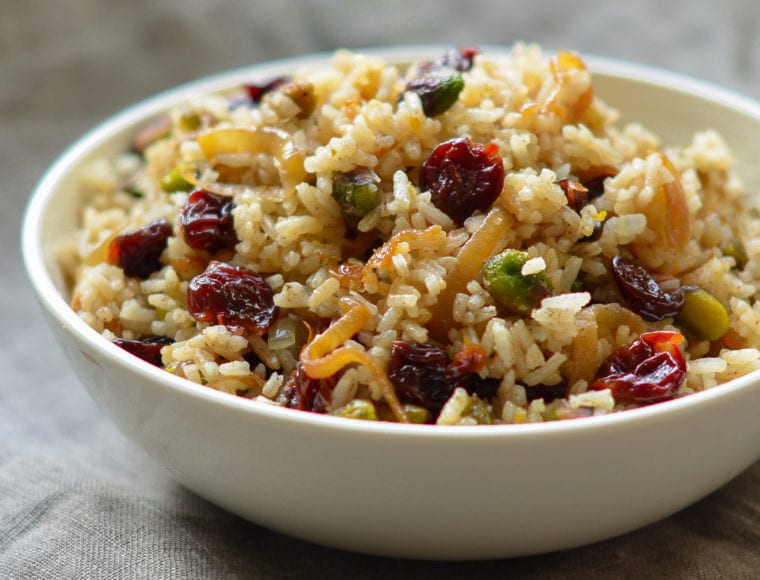
Sometimes it’s nice to make a super-simple entree and focus on making your side dishes special instead. This rice pilaf, modestly adapted from chef chef Ris Lacoste, is a delicious way to jazz up basic pan-seared salmon or roast chicken. It’s easy to make; just be sure to allow time to caramelize the onions. The key is to cook them low and slow so that they turn a rich caramel color without a touch of burning.
What you’ll need to make rice pilaf
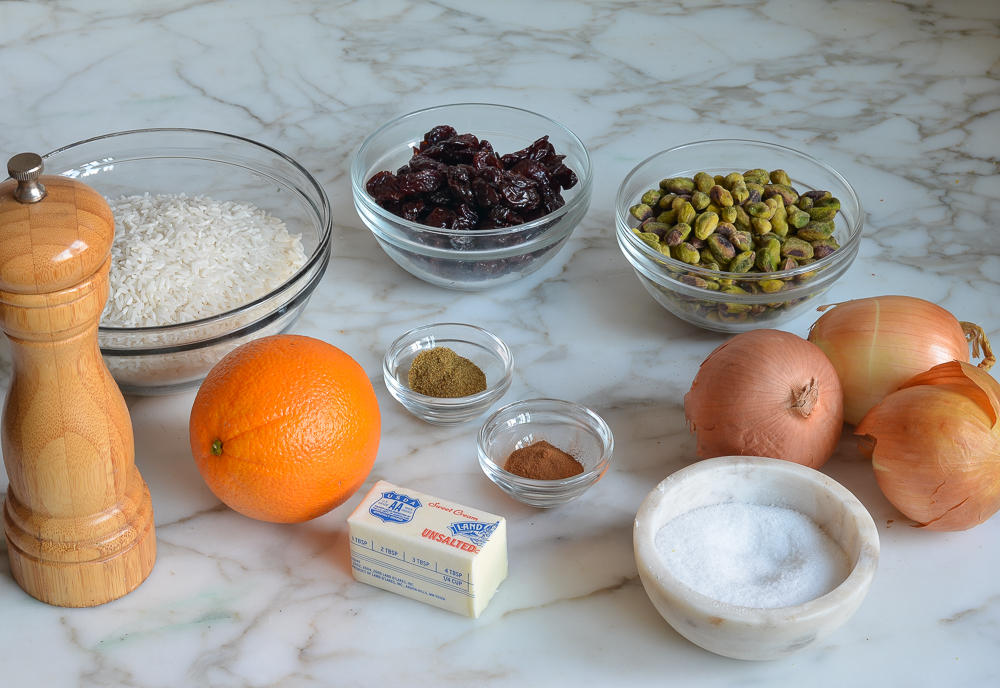
How to make rice pilaf
To begin, slice two of the onions into half-moons, and dice the remaining onion.

Set a liquid measuring cup with about 1/2 cup of water next to the stove. In a 12-inch skillet (preferably not nonstick), melt 2 tablespoons of the butter over medium heat. Add the sliced onions, and cook, stirring occasionally, until the onions are meltingly tender and a rich, deep caramel color, 20 to 25 minutes.
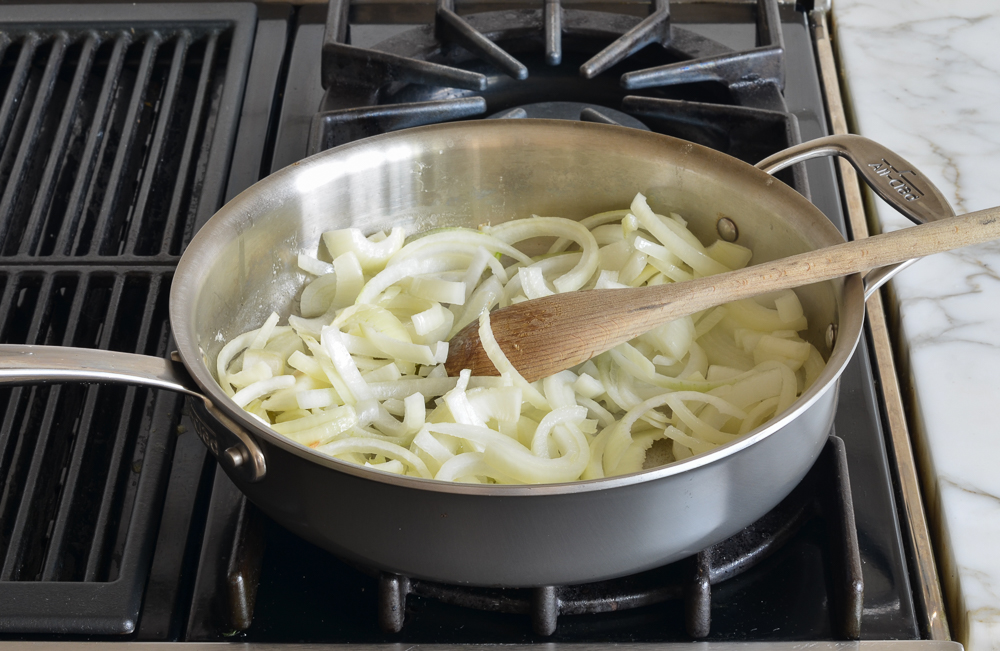
To help the caramelization process along and prevent the onions from burning, deglaze the pan every so often with a few tablespoons of the water—but wait to do this until you see a brown film forming on the bottom of the pan. I usually use about 1/2 cup of water total, but you may need a bit more or less.
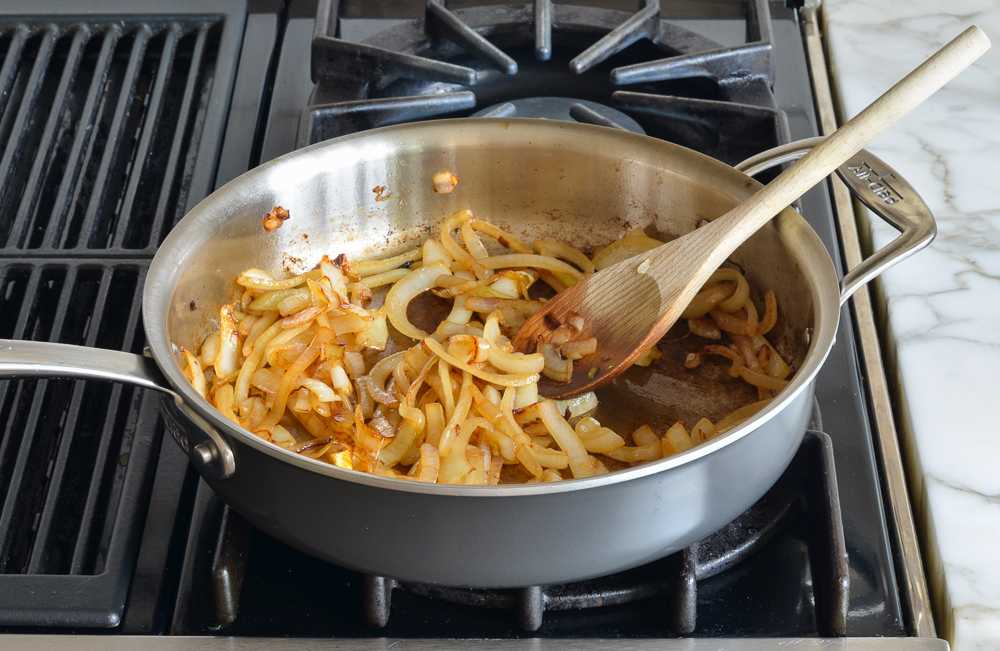
Add the cumin and cinnamon and stir well. Reduce the heat to low and cook one minute more, stirring occasionally, to allow the onion to absorb the flavors of the spices and caramelize a bit more. Season with 1/4 teaspoon of the salt and a few grinds of black pepper. Set aside.
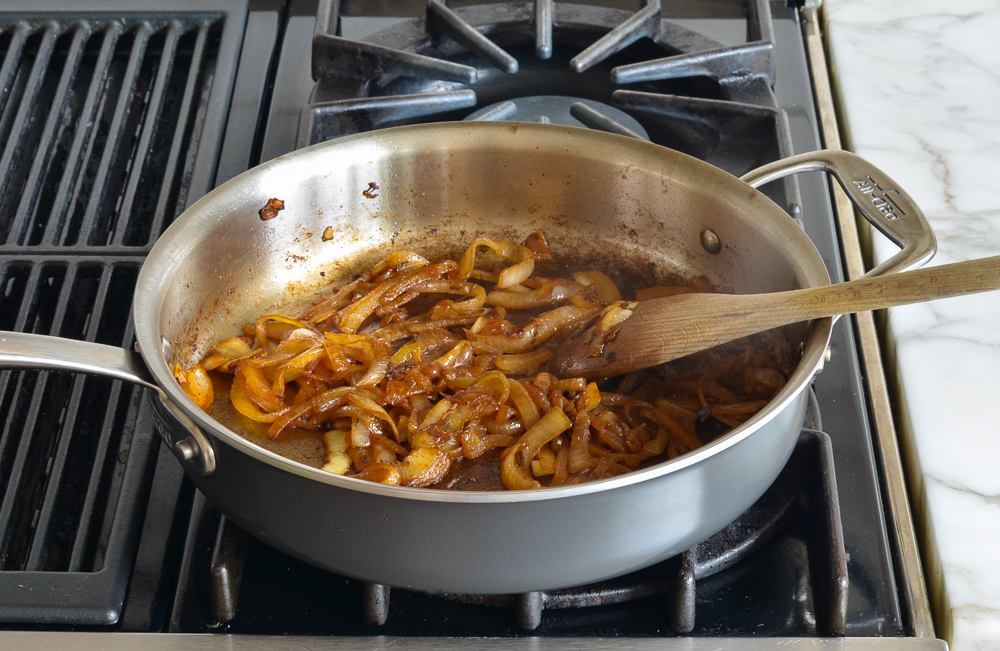
Zest and juice the orange.
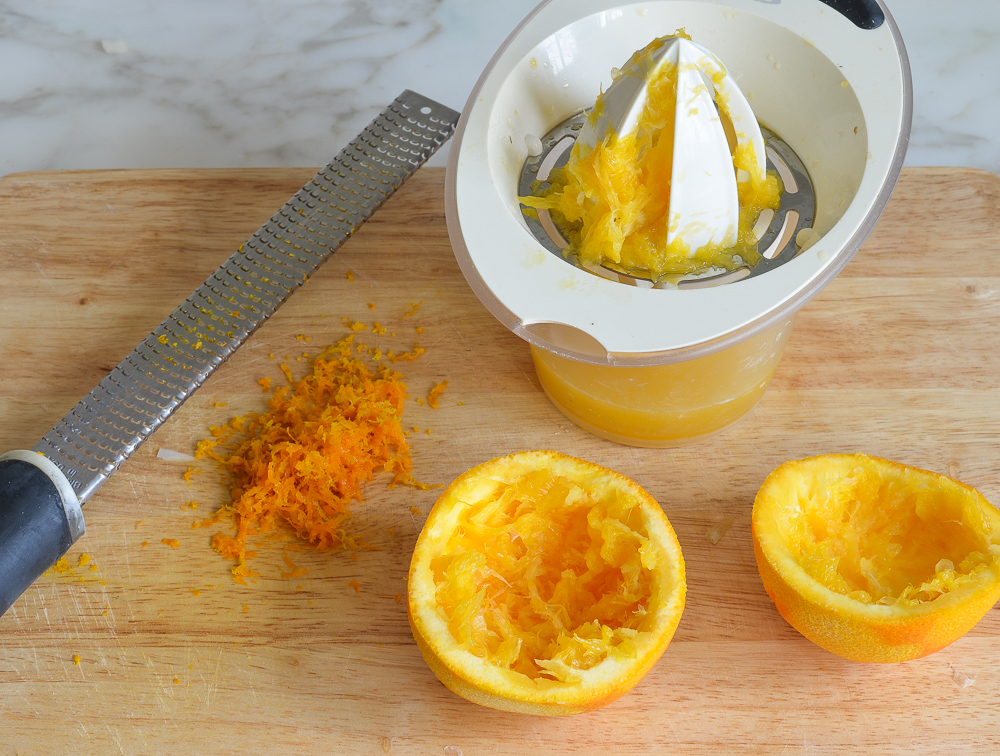
Pour the orange juice over the cherries in a small bowl to hydrate them, if necessary adding enough water to cover completely. Set aside.
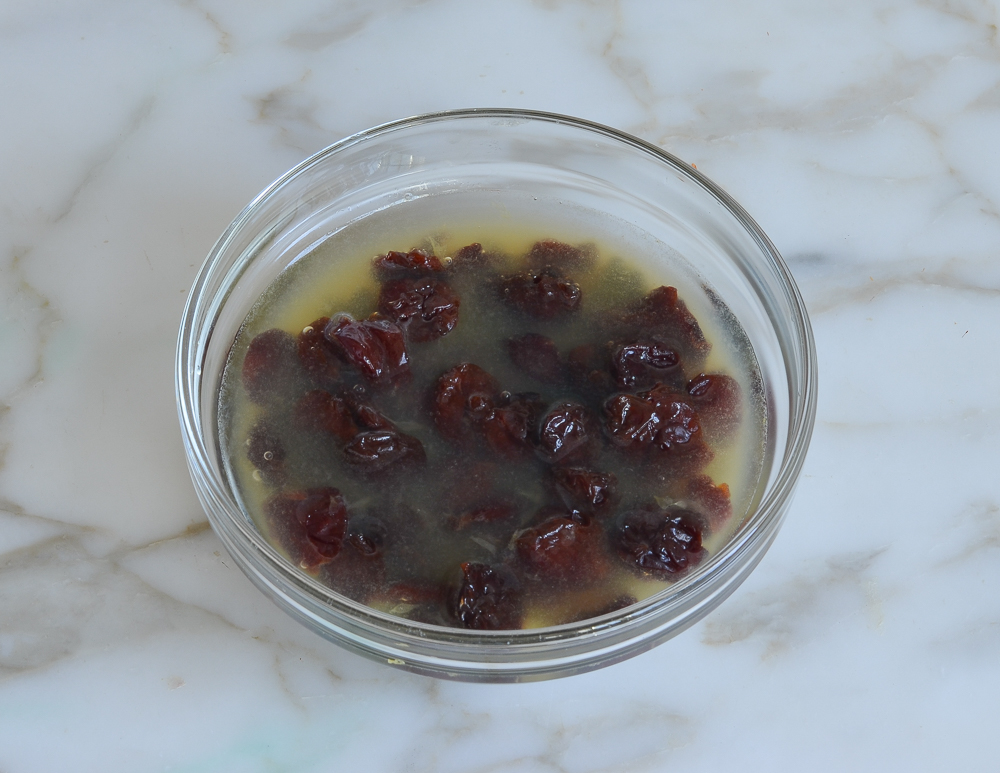
In a heavy 3-qt. saucepan with a tight-fitting lid, melt the remaining 2 tablespoons of butter over medium-low heat. Add the diced onion and cook, stirring occasionally, until soft but not browned, about 5 minutes.
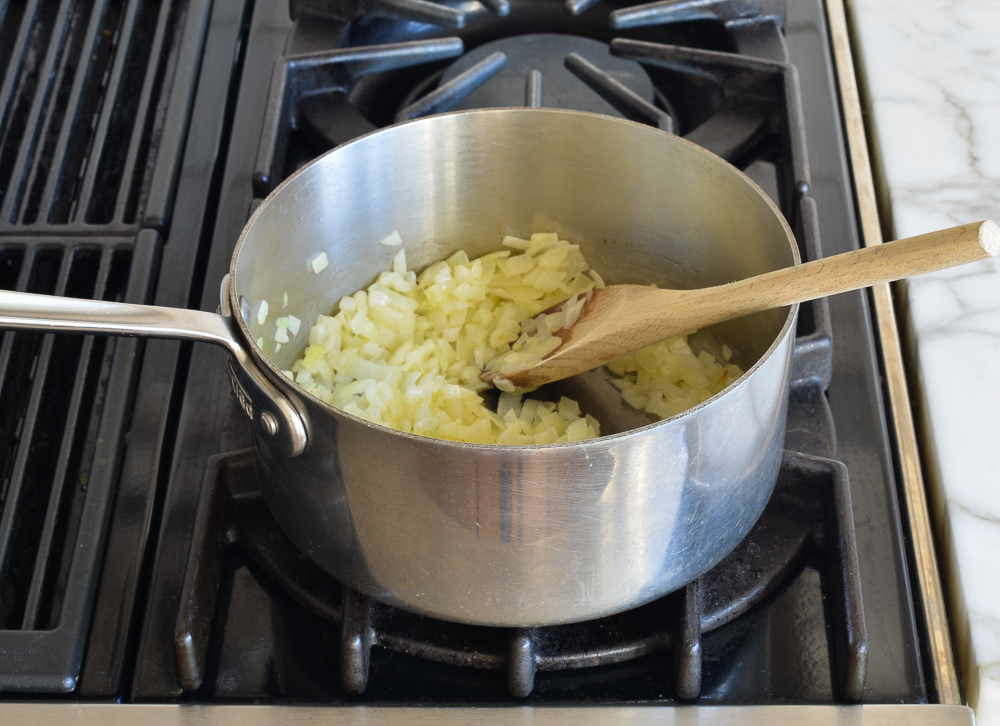
Add the rice and the remaining 1 teaspoon of salt, reduce the heat to low, and stir well to coat each grain with butter. Toast for a full 5 minutes, stirring regularly to keep the grains separated and to prevent them from sticking to the bottom of the pan.
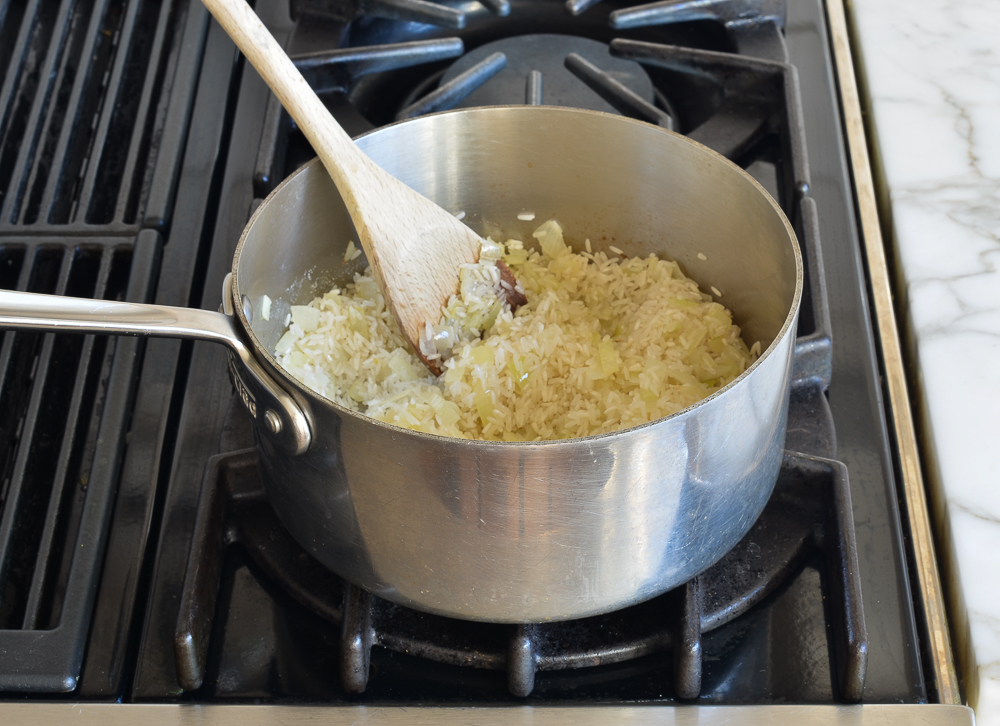
Add 2-1/2 cups water, stir once, and bring to a boil. Cover, reduce the heat to low, and cook for 18 minutes.
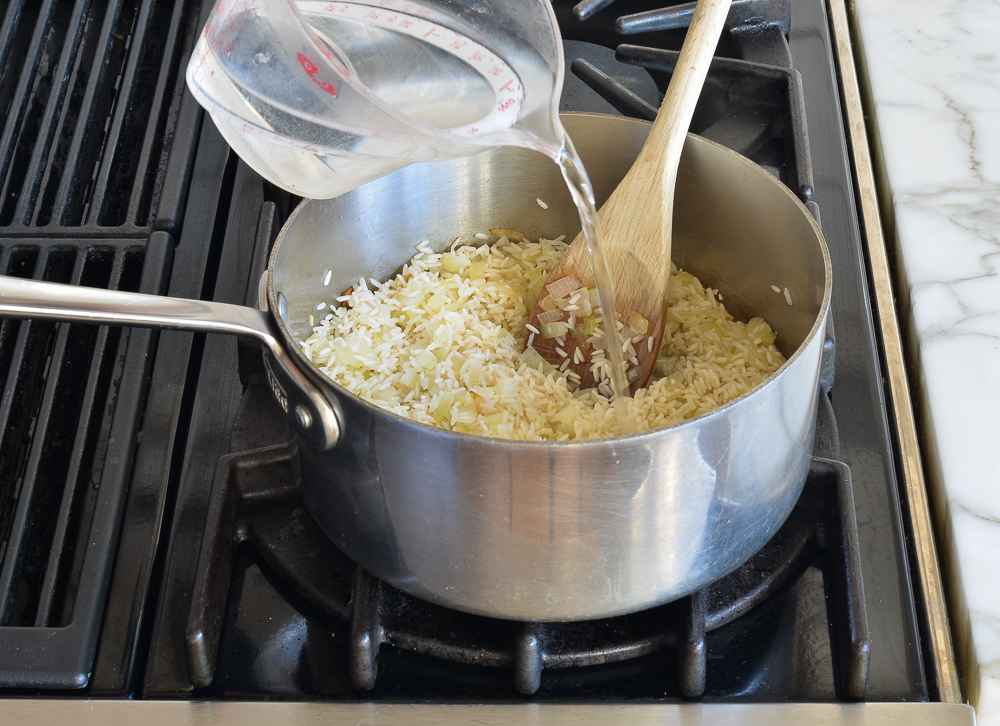
Remove from the heat, and let the pilaf sit, still covered, for 5 minutes.
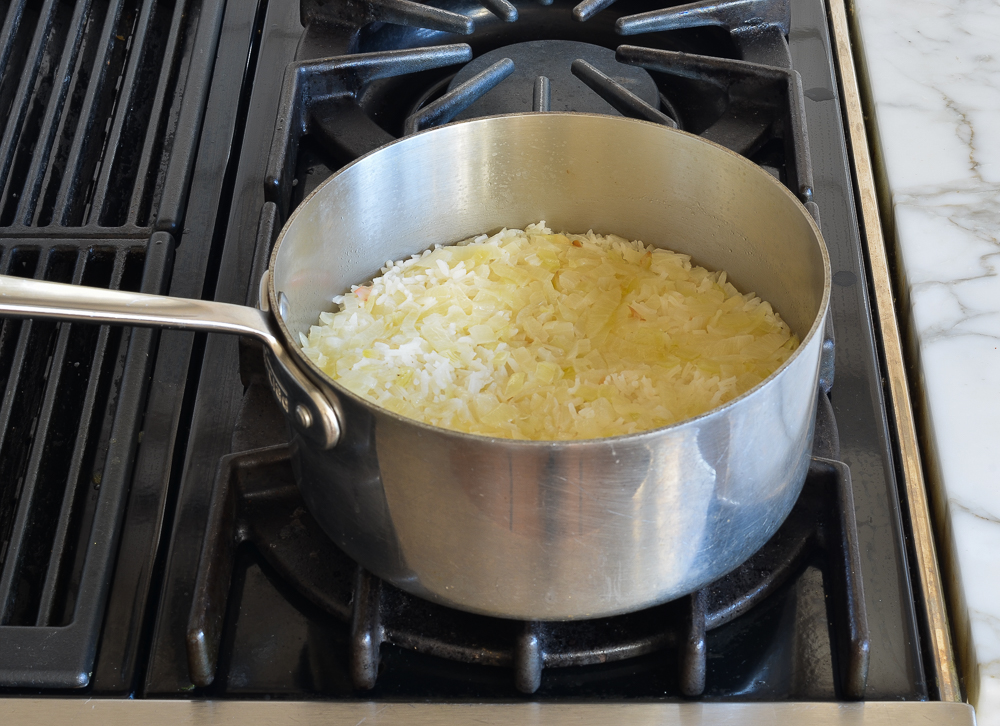
Once the pilaf has rested, remove the lid and fluff the rice with a fork.
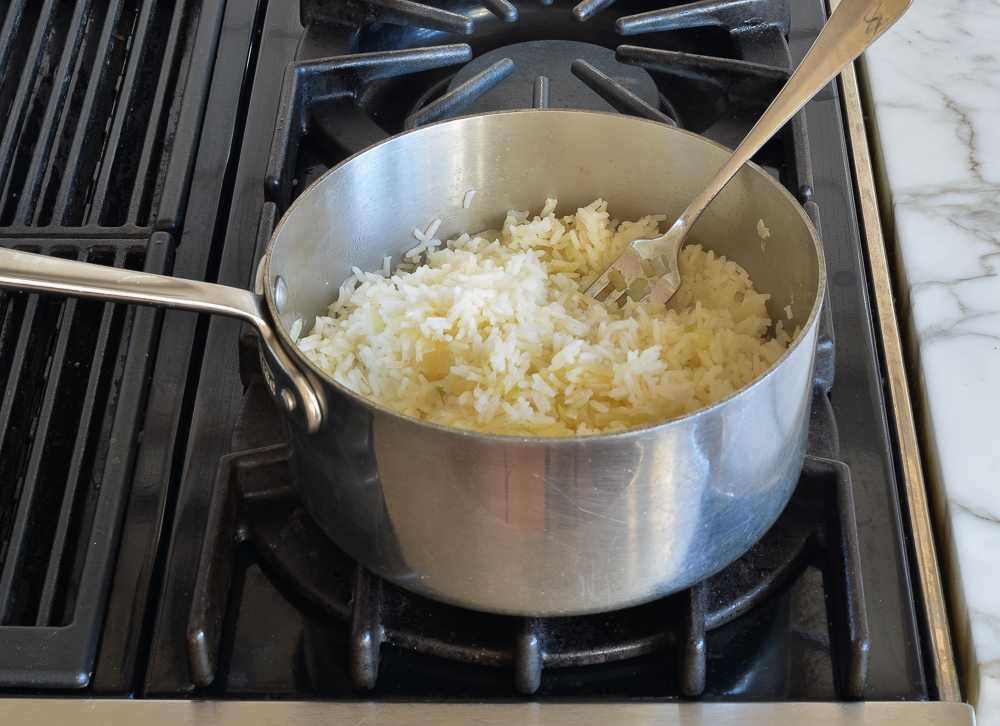
Strain the cherries and discard the orange juice. Using the fork, gently fold in the cherries, caramelized onions, pistachios, and 1/4 teaspoon packed orange zest.
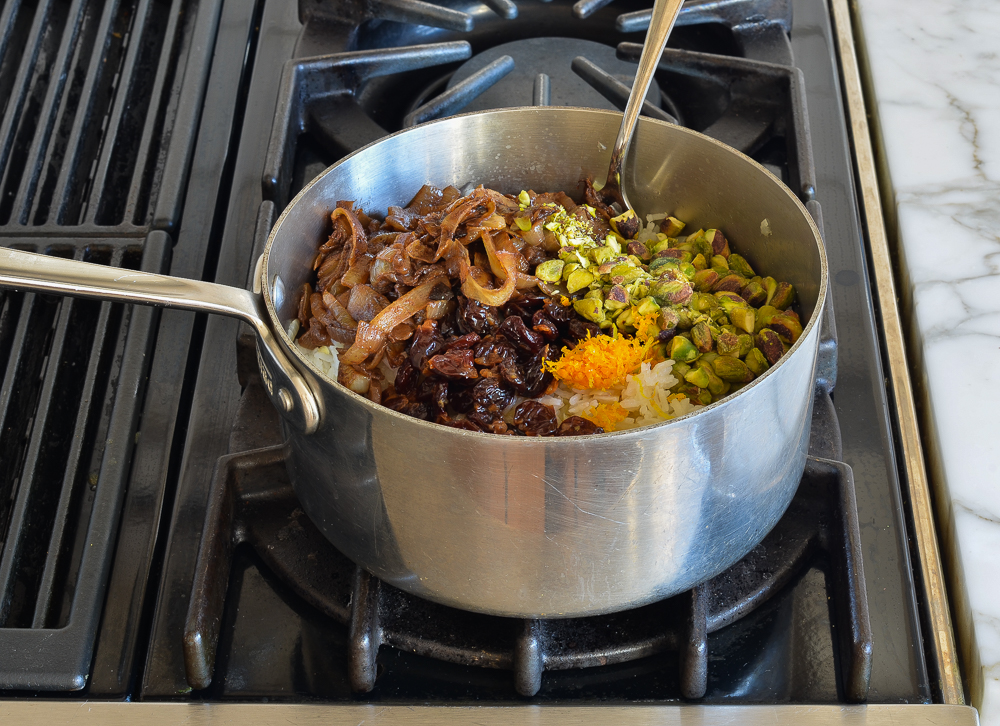
Taste and adjust seasoning, adding more salt, pepper and orange zest, if desired. (Note: Orange zest is very strong and somewhat bitter in flavor so be sure to add it little by little.)
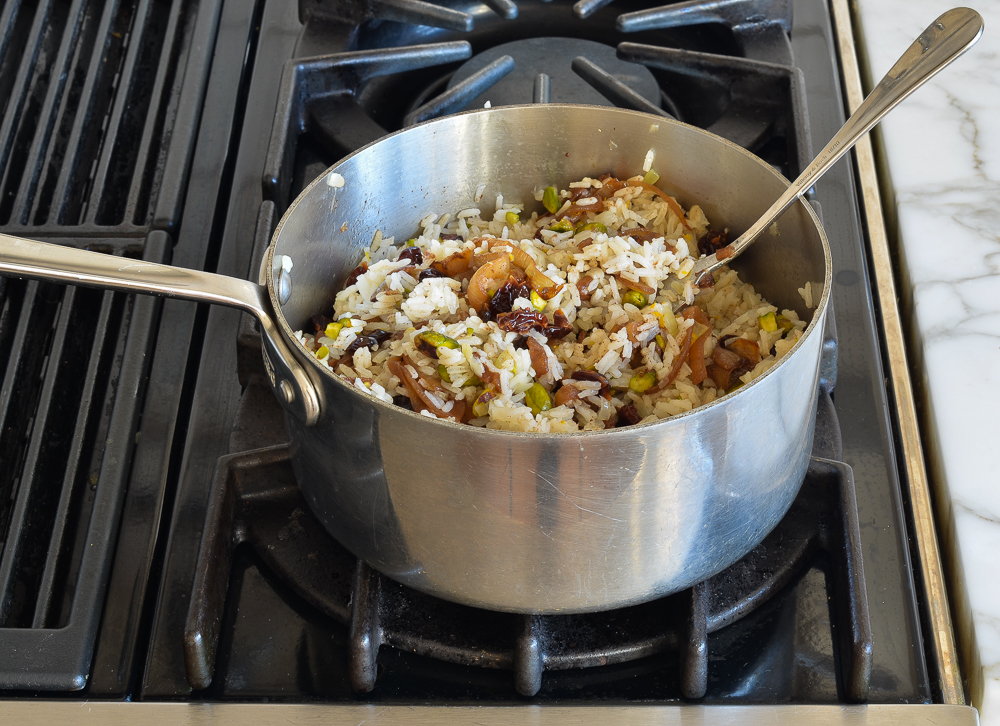
Enjoy!
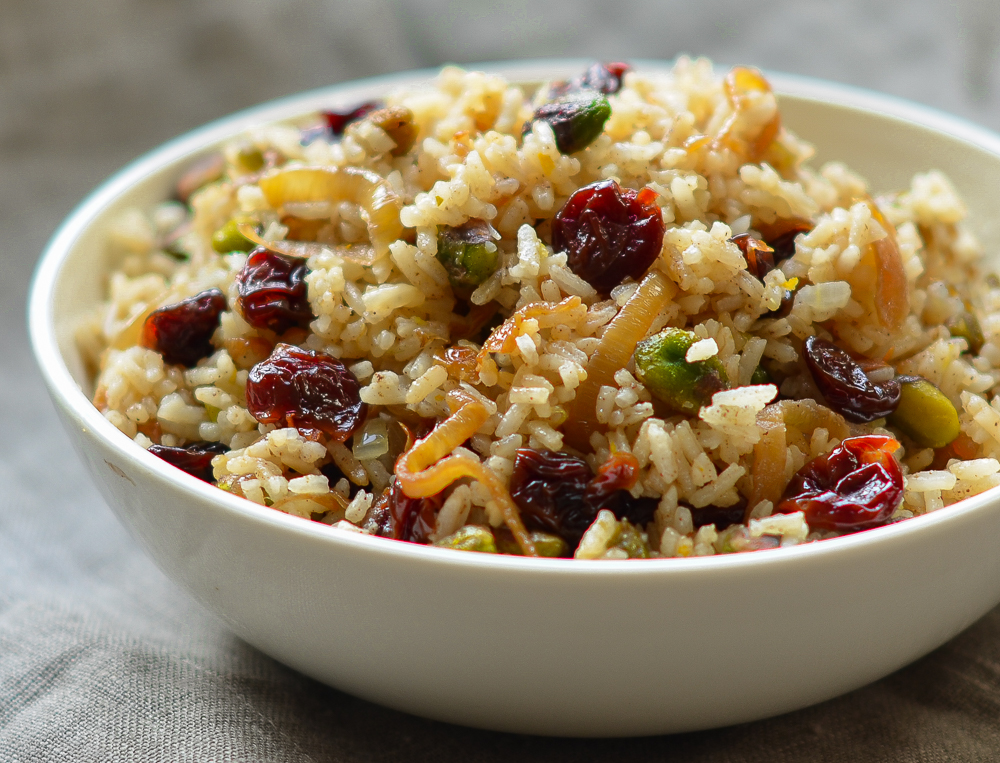
You may also like
- Basmati Rice Pilaf with Dried Fruit and Almonds
- Quinoa Pilaf with Mushrooms, Carrots, and Pecans
- Mexican Rice Pilaf
- Quinoa Pilaf with Chickpeas, Currants, and Almonds
Rice Pilaf with Caramelized Onion, Orange, Cherry & Pistachio
Perfumed with spices, this exotic rice pilaf is a delicious way to jazz up pan-seared salmon or roast chicken.
Ingredients
- 4 tablespoons unsalted butter
- 3 medium onions: 2 thinly sliced into half-moons; 1 finely diced
- ½ teaspoon ground cumin
- ½ teaspoon ground cinnamon
- 1¼ teaspoon salt
- Freshly ground black pepper
- 1 orange, zest (you'll use about ¼ tsp) and juice
- ¾ cup sweetened dried tart cherries
- 1½ cups long-grain white rice
- ¾ cup (3.5 oz) unsalted shelled pistachios
Instructions
- Set a liquid measuring cup with about ½ cup of water next to the stove. In a 12-inch skillet (preferably not nonstick), melt 2 tablespoons of the butter over medium heat. Add the sliced onions, and cook, stirring occasionally, until the onions are meltingly tender and a rich, deep caramel color, 20 to 25 minutes. To help the caramelization process along and prevent the onions from burning, deglaze the pan every so often with a few tablespoons of the water—but wait to do this until you see a brown film forming on the bottom of the pan. I usually use about ½ cup of water total, but you may need a bit more or less. Add the cumin and cinnamon and stir well. Reduce the heat to low and cook one minute more, stirring occasionally, to allow the onion to absorb the flavors of the spices and caramelize a bit more. Season with ¼ teaspoon of the salt and a few grinds of black pepper. Set aside.
- Pour the orange juice over the cherries in a small bowl to hydrate them, if necessary adding enough water to cover completely. Set aside.
- In a heavy 3-qt. saucepan with a tight-fitting lid, melt the remaining 2 tablespoons of butter over medium-low heat. Add the diced onion and cook, stirring occasionally, until soft but not browned, about 5 minutes. Add the rice and the remaining 1 teaspoon of salt, reduce the heat to low, and stir well to coat each grain with butter. Toast for a full 5 minutes, stirring regularly to keep the grains separated and to prevent them from sticking to the bottom of the pan.
- Add 2½ cups water, stir once, and bring to a boil. Cover, reduce the heat to low, and cook for 18 minutes. Remove from the heat, and let the pilaf sit, still covered, for 5 minutes.
- Once the pilaf has rested, remove the lid and fluff the rice with a fork. Strain the cherries and discard the orange juice. Using the fork, gently fold in the cherries, caramelized onions, pistachios, and ¼ teaspoon packed orange zest. Taste and adjust seasoning, adding more salt, pepper and orange zest, if desired. (Note: Orange zest is very strong and somewhat bitter in flavor so be sure to add it little by little.)
Pair with
Nutrition Information
Powered by ![]()
- Per serving (8 servings)
- Calories: 323
- Fat: 11 g
- Saturated fat: 4 g
- Carbohydrates: 50 g
- Sugar: 14 g
- Fiber: 3 g
- Protein: 6 g
- Sodium: 299 mg
- Cholesterol: 13 mg
This website is written and produced for informational purposes only. I am not a certified nutritionist and the nutritional data on this site has not been evaluated or approved by a nutritionist or the Food and Drug Administration. Nutritional information is offered as a courtesy and should not be construed as a guarantee. The data is calculated through an online nutritional calculator, Edamam.com. Although I do my best to provide accurate nutritional information, these figures should be considered estimates only. Varying factors such as product types or brands purchased, natural fluctuations in fresh produce, and the way ingredients are processed change the effective nutritional information in any given recipe. Furthermore, different online calculators provide different results depending on their own nutrition fact sources and algorithms. To obtain the most accurate nutritional information in a given recipe, you should calculate the nutritional information with the actual ingredients used in your recipe, using your preferred nutrition calculator.

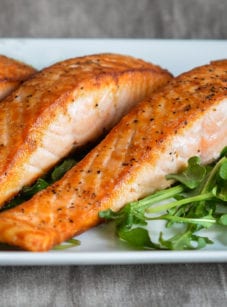
Worth the effort! Wonderful flavors, it’s a keeper for company!
I follow a Mediterranean diet and try not to eat rice – how could this be made with farro? Do you think it would work well? I love your recipes and appreciate your site so much!!! I wish I could take all the recipes I have in my ‘recipe box’ and make it into a cook book!
Hi Heather, so glad you like the recipes! Yes, you should be able to use farro here in place of the rice. Once you’ve cooked the diced onion, add the farro and salt and toast just until fragrant. After that, add the water according to the amount specified on the package (and same goes for the timing – cook the farro for the amount of time indicated on the package). I’d love to hear how it turns out!
Hi Jenn,
Rice was excellent… like most of your recipes. You really understand food. The combination of the sweetish, fruity rice went so well with the fish… Great work Jenn